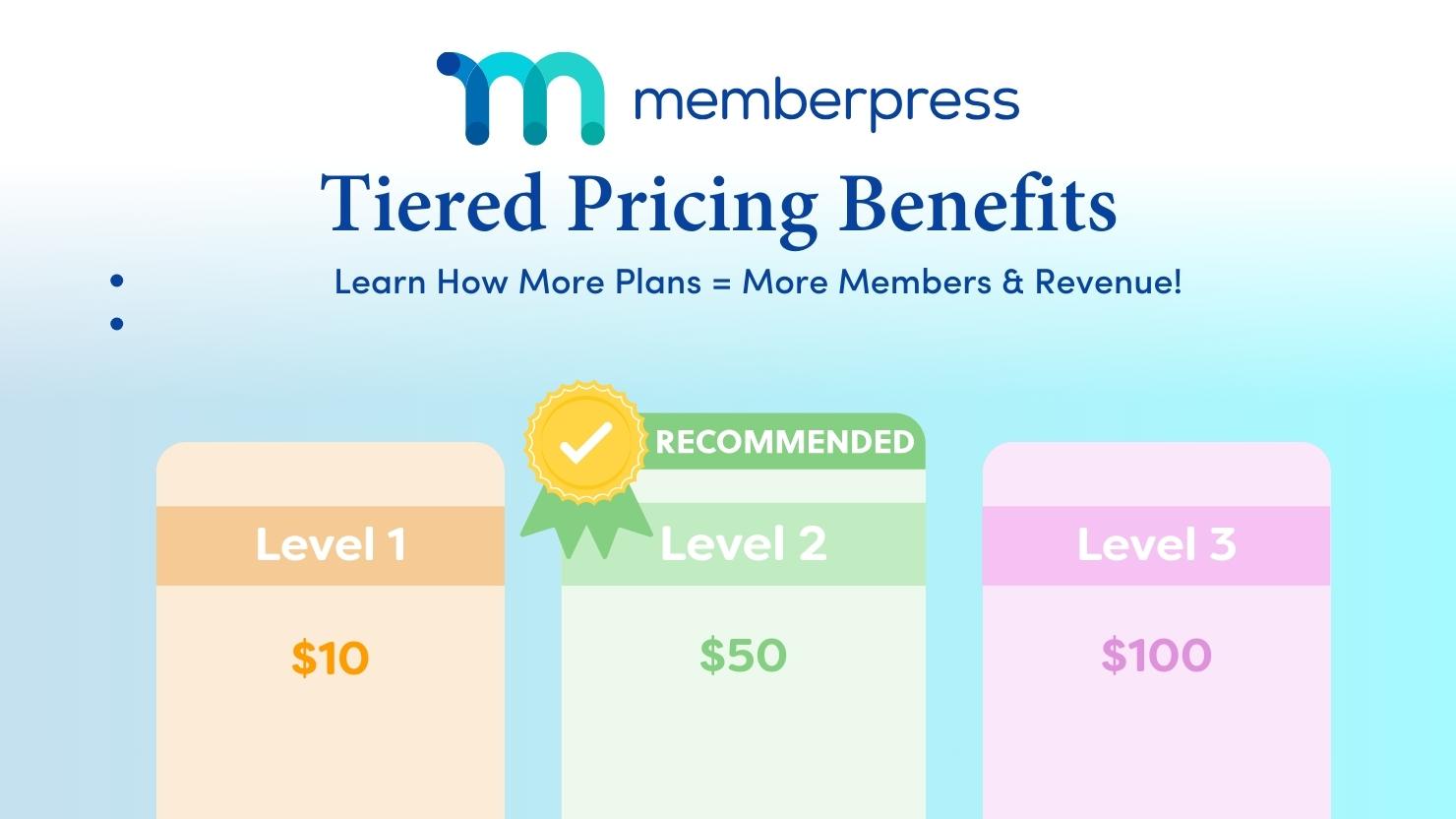Offering just one membership level? You might be missing out. Learn how tiered pricing can grow your audience, boost revenue, and add value for your members.
When you're just getting started with a membership site, it makes sense to keep things simple.
Most people focus on locking down content, setting up payments, and getting the basics running.
While a single membership level can do the job just fine, it might also be holding you back.
If you haven’t looked into multiple tiers yet, you could be leaving money (and members) on the table.
Let’s look at the key benefits of offering multiple pricing plans, plus a few practical tips for structuring them effectively.
The Benefits of Multiple Pricing Plans for Membership Sites
Reach More Members by Meeting Different Budgets
Not every member is looking for the same level of access or has the same budget.
By offering multiple pricing tiers, you can meet people where they are.
Some might only need your core content and want to keep their costs low. Others are ready to invest in deeper access, premium features, or more hands-on support.
Tiered pricing lets you serve both ends of that spectrum without building multiple products or overcomplicating your offer. It gives new members a lower-friction way to get started and gives long-time fans more opportunities to grow with you.
Use Free Memberships to Build Trust and Warm Up Leads
On the face of it, offering a free membership tier might not seem like a great way to generate revenue. But get strategic, and you can convert members to loyal paid up subscribers.
A free tier helps lower the barrier to entry. It lets people sample your content, get to know your style, and start building trust.
And trust is what drives conversions.
Free members can become some of your most valuable leads. Once they’ve had a taste of what you offer, they’re far more likely to upgrade when the time is right.
You can also use your free tier to:
- Build your email list
- Test your content and delivery
- Create an internal audience for launches or promotions
In short: free members aren't freeloaders, they're people interested in what you have to offer, who have opened up a path to becoming paid subscribers.
Create More Opportunities to Earn
On the other end of the spectrum from your free members are those who want to pay more for extras, exclusives, and added support.
The truth is, you never really know what your most dedicated (and affluent) members are willing to invest until you give them the chance.
A premium tier lets you explore that potential. You can test higher pricing, add new perks, and see what resonates.
Worst case? It doesn’t take off, and you adjust. Best case? You uncover a group of members ready to pay significantly more for extra value.
You’ll also start to see which tiers attract the most sign-ups, and what features your audience is actually willing to pay for.
That kind of insight is gold dust when it comes to refining your offers and pricing strategy over time.
The Opportunity to Take Advantage of Price Bracketing
Creating multiple levels for your membership site gives you some control over how your visitors perceive your pricing.
If you have just one pricing option, visitors can either say yes or no. Price bracketing and creating multiple tiers allows for a more nuanced conversion.
Your lowest-price membership level can be used to attract visitors; however, visitors will also see that by spending a little more, they get more value.
Finally, a high-priced top-tier option can be used to make a mid-level pricing plan seem like an even better value.
This psychological trick is known as the Goldilocks Effect – potential customers view the mid-priced option to be “just right!”
Help Visitors Decide Faster (Before They Get Distracted)
When someone lands on your site, they’re usually trying to answer one question: Is this for me?
If they can’t tell quickly, or if your pricing feels like an all-or-nothing decision, they’ll start second-guessing. That’s when they open new tabs, start researching competitors, or just leave it for “later.”
Offering a few clear pricing options shifts the question from “Should I join?” to “Which option makes the most sense for me?”
That small shift keeps people focused, helps them feel more in control, and often leads to faster sign-ups since they’re not stuck in research mode or weighing options that aren’t even on your site.
Greater Efficiency
Expand Your Offer Without Starting From Scratch
As your audience grows, so do their needs—and it can be tempting to start building entirely new products to serve them.
But chances are, you don’t need a second (or third) membership site. You just need smarter pricing tiers.
Want to reach beginners and advanced users? Offer different levels of access on the same site. Want to roll a few complementary topics into one offer? Bundle them into your top-tier plan.
This way, you’re serving multiple audience segments without multiplying your workload. You’re building on the site, content, and trust you’ve already established instead of starting from zero every time your offer evolves.
Membership Pricing Tips
Convinced that offering multiple pricing tiers for your membership product is the way to go? Great! Let’s look at some quick tips to help you build a pricing structure that feels good to your members and delivers value at every level.
Start with Three Tiers (It’s the Sweet Spot)
It’s tempting to offer five different plans to cover all your bases, but most of the time, three is enough:
- A free or low-cost entry point
- A mid-tier plan that covers the core offer
- A premium tier with extras for your most invested members
This keeps things simple and helps guide your visitors toward a choice, instead of overwhelming them.
Name Your Plans With Purpose
Your pricing tier names don’t need to be flashy, but they should carry meaning.
Think about what each tier represents in terms of value, access, or transformation. Are your members moving from beginner to expert? Dipping a toe in or going all-in? Choose names that reflect that journey.
You don’t have to reinvent the wheel. Terms like Starter, Pro, and Elite work because they’re familiar and easy to understand. Or, if your brand has a strong identity, lean into it with more personality or industry-specific language.
Whatever you choose, make sure the names align with real differences between the plans. A premium-sounding name without premium-level value will only lead to confusion…or disappointment.
Add Meaningful Perks to Premium Tiers
If you want people to choose your higher-priced plans, the extra cost has to feel worth it. Some ways to increase perceived value:
- Live calls or coaching sessions
- Exclusive content (like advanced tutorials or behind-the-scenes materials)
- Priority support
- Community access or smaller group spaces
- Discounts or bonuses on other products
Don’t just add fluff. Make sure the upgrades actually matter to your members and are easy for you to deliver consistently.
Keep Your Comparison Table Focused
When you lay out your pricing table, don’t list every single feature under the sun. Too much detail can lead to “paralysis by analysis.” Instead:
- Highlight 3–5 key features that differentiate each tier
- Use checkmarks or short phrases, not long descriptions
- Make the middle option feel like the natural choice (that Goldilocks sweet spot)
Final Thoughts
You don’t need to do anything fancy here. Just think about the different kinds of people landing on your site. Some are curious. Some are ready to go all in. Some need a bit more time.
Offering a few pricing options gives them room to choose what makes sense for them without you having to bend over backwards.
Start small. Watch what happens. You’ll learn what people actually want, and you can always tweak things from there. Focus on making it easy for the right people to say “yes,” and it's hard to go wrong!
Pay attention, adjust, and you'll see your memberships, and your revenue, increase exponentially!
Are you ready to start offering multiple membership levels for your site? Let us know your thoughts in the comments below.
If you found this article helpful, follow us on Facebook, Twitter, Instagram, and LinkedIn!













How have you created the memberships table (in color at the top)? With MemberPress? I didn’t see that template.
This was just an example and not meant to represent an actual template in MemberPress. There is not any real content in it just filler text.
This is a great post. Something I’ve been looking to add to my MemberPress site.
What would be good a post on exactly to do this in MemberPress.
Hi Gav,
There is some information in the online documentation:
https://memberpress.com/user-manual/memberpress-groups/
Hope this helps.
Joe
I create cheap or free great products that serve as ads for the expensive one. Am going to meditate on your concepts here, and send your material to my team who does actual hands-on.
Glad we can help, Emily 🙂